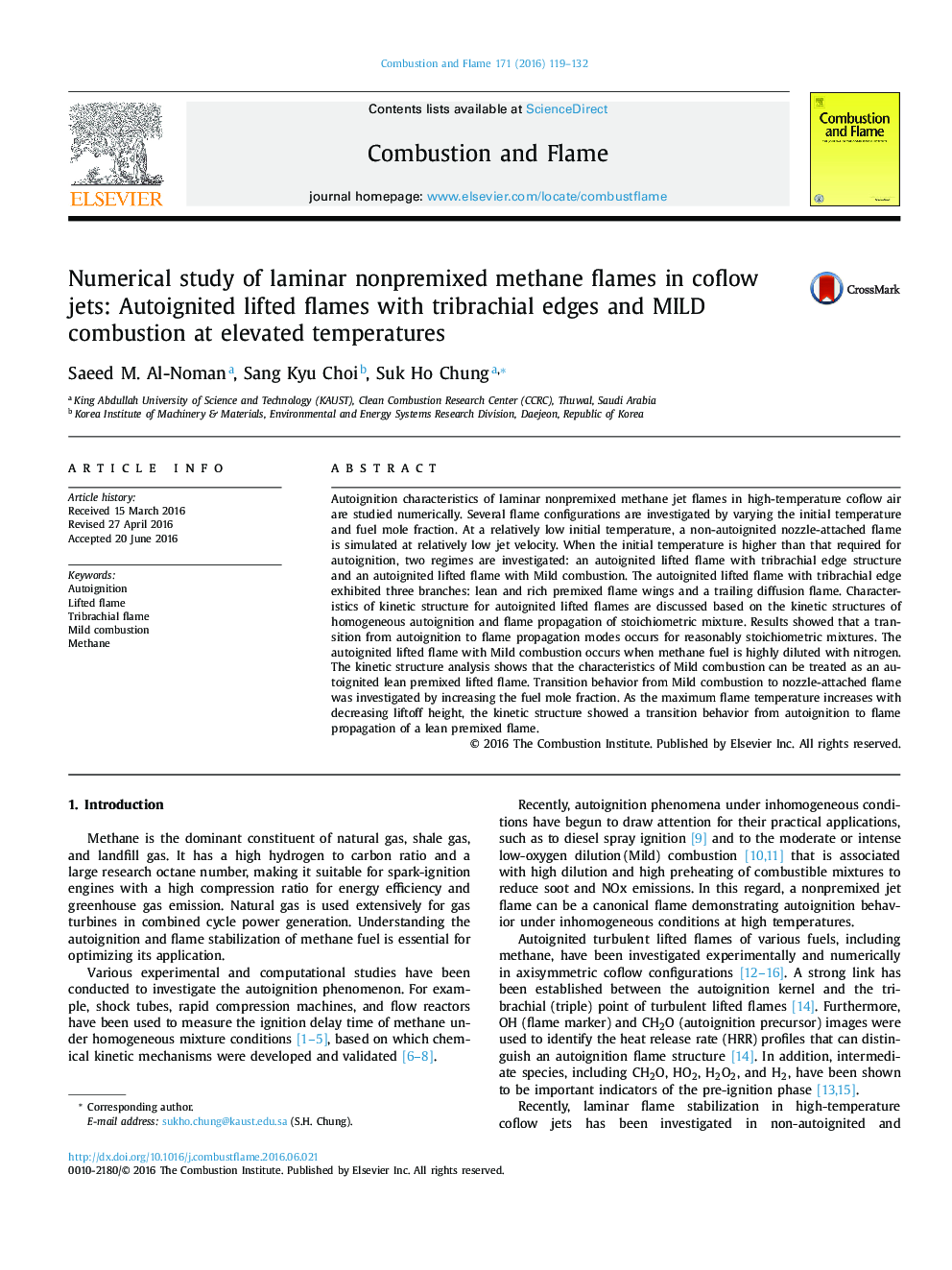| Article ID | Journal | Published Year | Pages | File Type |
|---|---|---|---|---|
| 168457 | Combustion and Flame | 2016 | 14 Pages |
Autoignition characteristics of laminar nonpremixed methane jet flames in high-temperature coflow air are studied numerically. Several flame configurations are investigated by varying the initial temperature and fuel mole fraction. At a relatively low initial temperature, a non-autoignited nozzle-attached flame is simulated at relatively low jet velocity. When the initial temperature is higher than that required for autoignition, two regimes are investigated: an autoignited lifted flame with tribrachial edge structure and an autoignited lifted flame with Mild combustion. The autoignited lifted flame with tribrachial edge exhibited three branches: lean and rich premixed flame wings and a trailing diffusion flame. Characteristics of kinetic structure for autoignited lifted flames are discussed based on the kinetic structures of homogeneous autoignition and flame propagation of stoichiometric mixture. Results showed that a transition from autoignition to flame propagation modes occurs for reasonably stoichiometric mixtures. The autoignited lifted flame with Mild combustion occurs when methane fuel is highly diluted with nitrogen. The kinetic structure analysis shows that the characteristics of Mild combustion can be treated as an autoignited lean premixed lifted flame. Transition behavior from Mild combustion to nozzle-attached flame was investigated by increasing the fuel mole fraction. As the maximum flame temperature increases with decreasing liftoff height, the kinetic structure showed a transition behavior from autoignition to flame propagation of a lean premixed flame.
